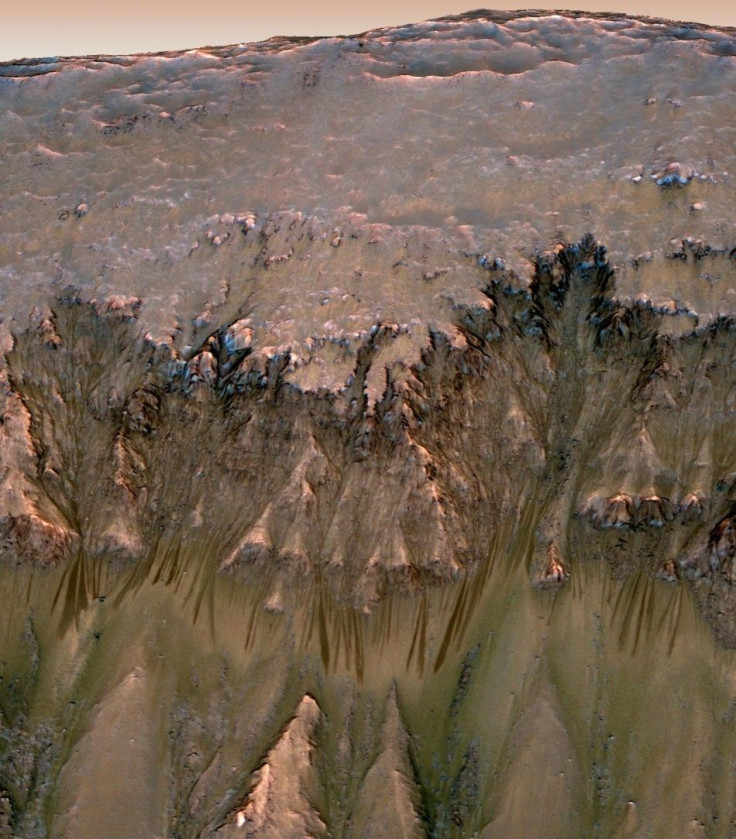NASA discovers evidence of flowing water on Mars

NASA scientists have discovered fresh evidence that water is flowing on Mars during its warmest months, raising the likelihood that life could exist on the red planet, the agency said on Thursday.
NASA first found evidence of water on Mars more than a decade ago, but earlier indications were that currently existing water would be mostly frozen and concentrated at the poles.
Recently analyzed images from the NASA Reconnaissance Orbiter that has circled the planet show dark, finger-like features that appear and extend down some Martian slopes during late spring through summer and fade in the winter.
"This is the best evidence we have to date of a liquid water occurring today on Mars," said Philip Christensen, geophysicist at Arizona State University, Tempe, in a NASA panel announcing the findings.
NASA scientists believe that if flowing, liquid water exists on Mars, it would be highly salty. That would explain why it would not freeze in the planet's cold temperatures.
"It is more like a syrup, maybe, in how it flows," said Alfred McEwen of the University of Arizona, Tucson, principal investigator for the NASA orbiter's High Resolution Imaging Science Experiment.
The briny, flowing Martian water -- if it exists -- could be "rather different than pure water," said McEwen, lead author of a report on evidence of water flows on Mars published in the Thursday edition of the journal Science.
Lisa Pratt, biogeochemist at Indiana University, Bloomington, who was on the NASA panel discussing the results on Thursday, said the findings were significant.
"It is our first chance to see an environment on Mars that might allow for the expression of an active biological process, if there is present-day life on Mars," she said.
© Copyright Thomson Reuters 2024. All rights reserved.











